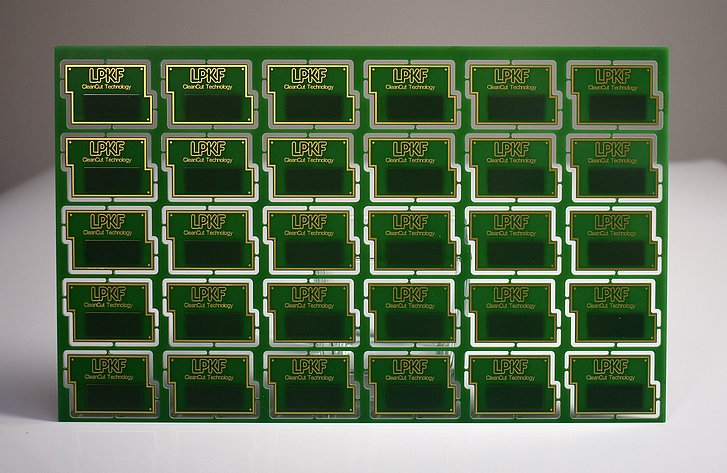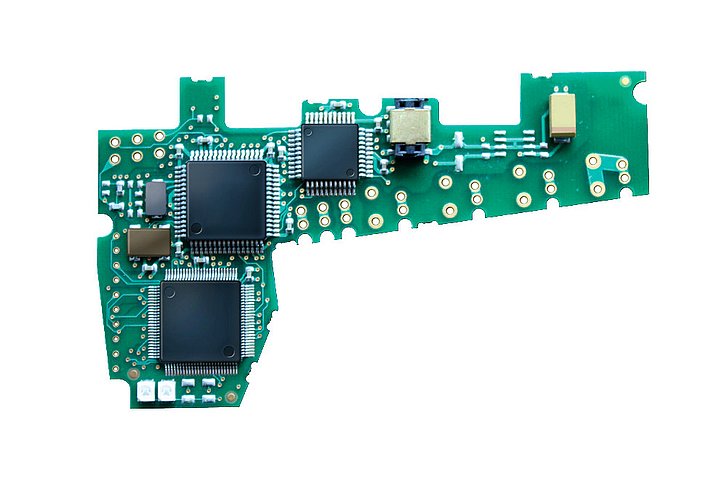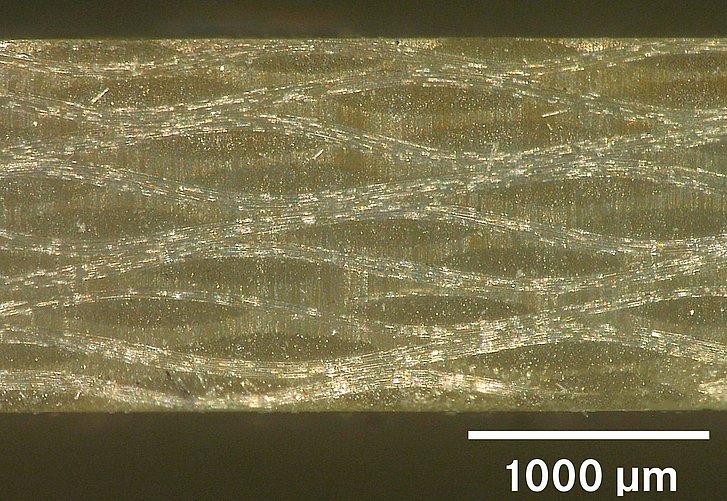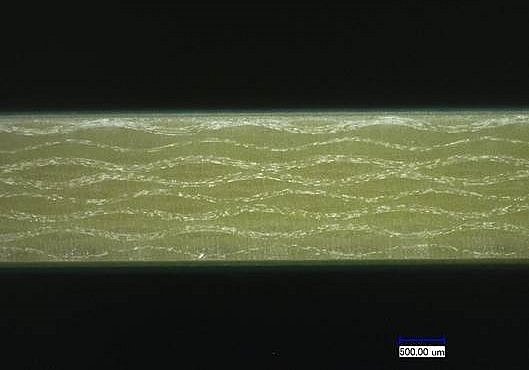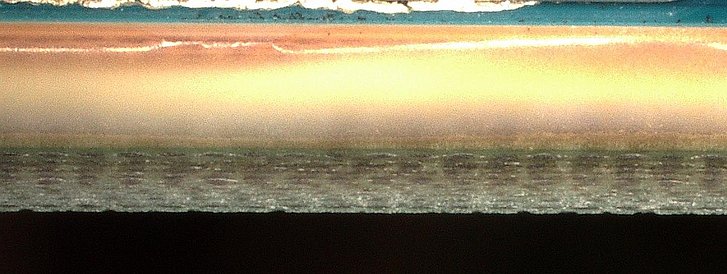What is FR4?
FR4 is a class of printed circuit board base material consisting of an epoxy resin-glass fabric composite. The naming is due to the properties of the composite, as the material is characterized in particular by its severe flammability and flame retardant properties. In addition, the appended number - in this case 4 - indicates the resistance class, which is defined by UL94V-0.
Since this is a classification of materials, the compositions of FR4 variants, and thus the requirements for cutting the material, can differ significantly. Due to the composition, for example, the material properties in terms of water absorption, melting temperature or dielectric constant can vary depending on the variant or supplier.
Applications of FR4
Due to their characteristics, such as very good thermal and short-circuit resistance as well as relatively low-cost production processes, FR4 materials are ideally qualified for standard PCB manufacturing applications. Consequently, those materials are widely used across all industries with strong demand for electronic products, i.e. automotive, consumer electronics or medical technology.
Because of the adaptability of the material composition, a range of industry-specific requirements can be covered. For more specific applications that, for example, have a very limited installation space for the end product or very high thermal conductivity requirements, it is advisable to consider other materials as well.
Advantages of FR4
Despite the many advantages offered by FR4 materials for electronics manufacturing, they are generally quite inexpensive due to their relatively simple manufacturing process. The very good price/performance ratio is therefore often a decisive argument for material selection when cost pressure is high.
Cutting of FR4 with a Laser
With the laser as a depaneling tool, a wide variety of FR4 composites can be processed highly economically and as an attractive alternative to mechanical separating processes, such as milling or punching. The laser is characterized by several key advantages: firstly, no mechanical stress is induced into the material by the non-contact process. Second, the deposition of dust that could cause malfunctions is avoided due to the process.
LPKF has many years of experience in the field of laser depaneling and regarding the specific requirements of FR4 materials, and can thus adapt the quality and performance of the cutting process to the needs of your applications. With the laser, combinations of cutting edge quality and effective cutting speed can be achieved for common FR4 materials that cannot be reproduced by mechanical cutting processes.
With CleanCut-Technology, LPKF can guarantee maximum technical cleanliness for FR4 applications and thereby ensures that, in additon to dust, no carbonization remains as residues on the material. The integration of thermal energy is specifically controlled during the process so that there is no burning or carbonization of the material at any time.
In this way, the potential of the laser can be exploited to the full. This is also one of multiple unique selling points compared to other laser technology providers: LPKF is the market leader in terms of technical cleanliness and the related process know-how.
A combination of FR4 materials with further additives such as adhesives or copper on the substrate can also be separated very cleanly and efficiently with the laser. This is the case, for example, when cutting out system-in-packages (SiPs), where in addition to the FR4 base substrate, the molding and possibly copper must also be cut through.
While other processes and suppliers reach their technological limits for these applications, the laser with its flexibility continues to deliver outstanding and consistent cutting quality and performance.
Benefits of Laser Depaneling
Singulating FR panels by the use of a laser has several significant adanvtages in comparison to mechanical separation methods:

